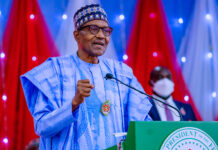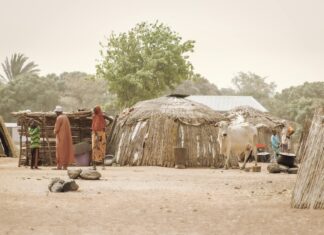By Chris Paul Otaigbe
Nigeria’s quest to diversify her economy and bring in more revenue from the non-oil sector is being given a boost by the United States with the expected injection of at least $90million into the country’s agricultural sector.
The American government investment initiative, which is in furtherance of the growing relations between the two countries is expected to take off early next year and would be a joint venture with Nigerian young Agric-entrepreneurs, focusing on women and the youth.
The fund is to be administered by an American agency given the mandate by the US government to build a new Trade and Investment hub for the West African sub-region. Michael Clemence works for the Agency and is the Chief of Party to the Fund.
Although there have been previous versions of these interventions by the U.S. government in the area of funding, Michael said this is a new one, which started at the beginning of September 2019 and scheduled to run for five years.
Three months into its operations, the program is yet to start, while all it is doing at the moment is raising awareness of its coming. This was exactly what it went to do at the just concluded Agra Innovate West Africa Exhibition Program which held in Lagos on November 25 and 26, 2019. “But we would be opening for business in January or February next year, 2020… so, we are in the awareness phase, we have recruited our team. But we are not yet opened for business.” Said Mike.
He said the vision of this particular program is different from previous versions of the U.S. Government assisted trade hubs. According to him, the trade hub aims to set up a co-investment fund, which is the heartbeat of this particular module of the intervention. “By co-investment, we mean, we would partner with private sector participants whereby they would bring up a concept that would generate economic growth based on technology or innovation…. We are looking for increase in productivity, in quality and job creation…” said the Chief of Party.
What that means is that the Agency would put on the table a matching fund while the Nigerian side would put that same amount down. In other words, they would invest a counterpart fund, while the Nigerian private investor would also invest same amount on particular projects. “Our grant size is anything between $250k and $2 million… so, if you put together your $2 million to our $2 million, we can do something substantial with $4 million that would definitely deliver on job creation and we have got particular interest in women and youth… creating opportunities for women and youth, that is our focus.” Said, Mike.
The program is also extended to some countries in West Africa which include, Cote D’Ivoire and Senegal. Even though other ECOWAS countries would join the program along the way, Michael said the project has enough critical mass, within these countries, to begin the program.
Speaking honestly on the time period, say, in the first nine months for the deliverables of the program especially in the area of job creation, the Fund’s Chief of Party said nine months may be too short to achieve some of its lofty goals but explained that job creation generally courses like a hockey stick. “It starts off slowly and then accelerates upward as things start to gain momentum and the upper end of that scale could be three to four years away. So, to be very honest with you, it would not surprise me if we didn’t create any job in the first nine months…” he said.
Personally, Michael said, he does not have a particular target for job creation. His major concern and passion are designed to plant various seeds in the soil so that at maturity they would, then create as many millions of jobs at the right time. “So, it actually stems from what you do now, to stimulate jobs further down the line…” He affirmed.
In the area of agriculture, the support of the hub stands on two legs: Financial and Research and Development (R&D). “There is a part of our program where people would have access to grants to undertake research and development. This first co-investment part which is the bigger part of our fund is really meant to increase productivity, volume of production, raise the quality of what is being produced and assist with marketing, sales and distribution of Products…” Explained Chief of Party.
The Project breaks the agriculture value chain into three major broad segments; production, distribution and consumptions, so the hub can work from the beginning to the end of the chain while assisting participants within the activity cycle with funding. So, within that chain of events, Michael said “we allow ourselves to work from the first task, in production, to the last task, in consumption… and anywhere along that value chain where people need financial assistance to bring an idea to life on how those areas can deliver on what we are talking about, we are interested in hearing from them…” he said.
Explaining further, he said, on a matching fund basis, the Nigerian farmer potentially has a helper in the hub. “It is not that we simply give money to the Nigerian farmer or anybody else without them putting in money as well. That is the mechanics of it.” He said.
In other words, what the hub’s style of play implies is that, before the Michael crew came onto the field of play, the Nigerian farmer probably had, say, a two million dollar fund, as part sum for a $4 million project he needed to embark upon but didn’t have an idea how to source the remaining sum. Now, with the hub coming into operations, he has a helper in the agency to help him match his $2m with its $2m to do his $4m project.
How the new hub would reach him may be the challenge, Michael and his team have to grapple with. But the Chief of Party said “that is a part of the process that would start as soon as the fund launches. We would do events, make announcements… one of the things we do at this conference (the Agra Innovative event) is collecting phone numbers and email addresses and would add them to our mailing list. At the right time everybody would get an email to let them know the fund is launching or the fund has been launched. In that email, would be a link to our website…”
He is confident the hub would reach a massive number of people, farmers and all using the strategies and media outreach associates available to his agency.
In response to the insinuation that the project may have some tinge of experimental streak to it, he laughed and said “I don’t want to argue with you that this is an experiment and I don’t think it is a pilot project either. What we are doing is based on some very solid research and I am 99.9% confident that we would succeed in what we are doing. So, that is not an experiment. To the extent that we are prepared to put our money where our mouths are and what we are launching is a $90 million Fund. You don’t say that, if you are still in an experimental mode…” said Michael.
The fund, according to him, is in two pieces. The bigger piece which is $60 million is for the co-investment part, he talked about, while the $30 million is to be invested in Technical Assistance. “But the objective with this $60m is that we would leverage another $300m worth of private sector investment. So, between them and us, we would be pumping about $360m into the economy.” He added.









